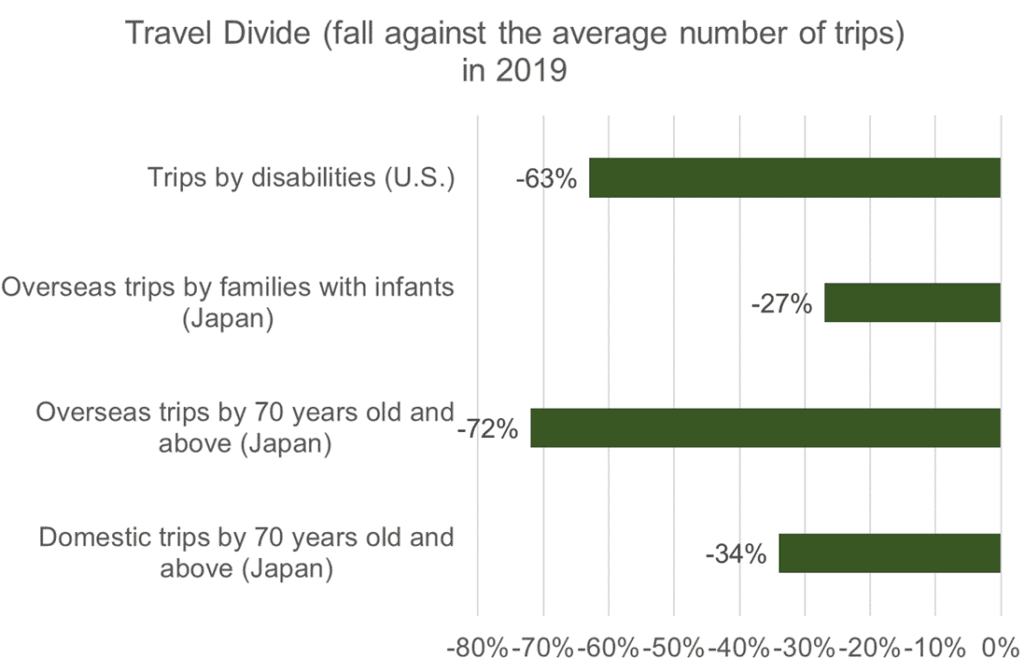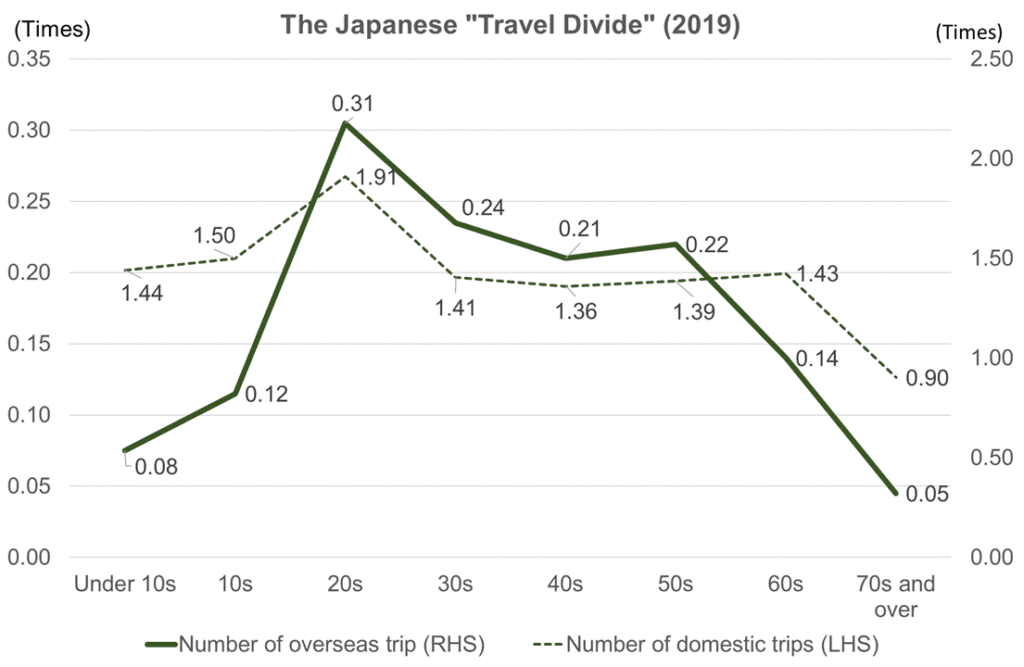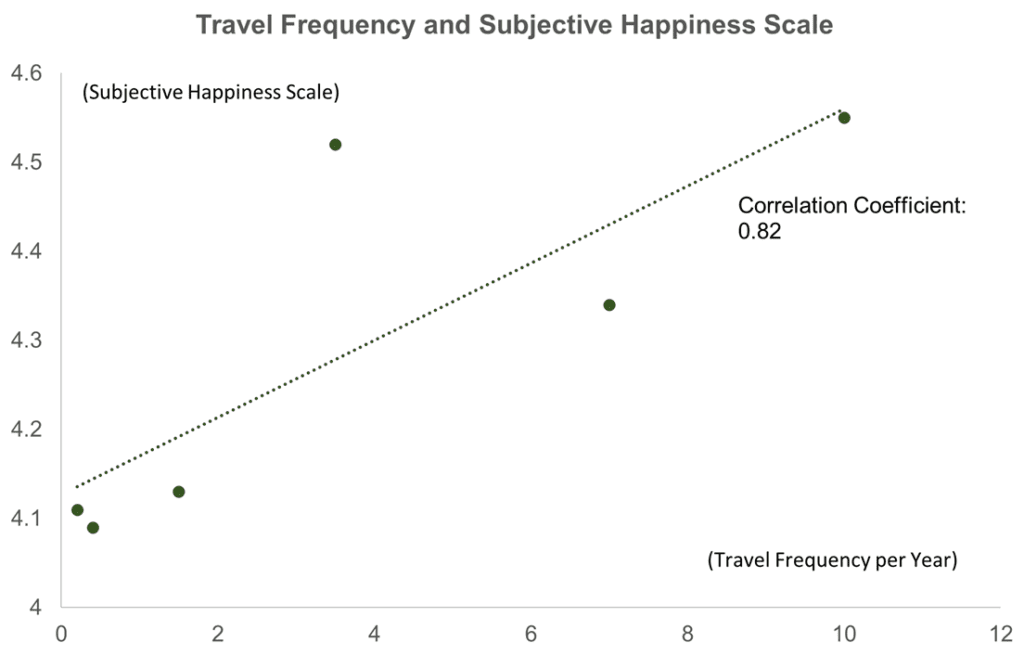An Analysis of the “Travel Divide” (Summary)
Table of Contents
1: The Cause of the ‘Travel Divide’ Isn’t Money or Time
2: Heavy Luggage Identified as a Key Factor in Reduced Travel Frequency
3: Decreased Travel Leads to Lower Dementia Risk and Significant Economic Benefits
4: Achieving the SDGs’ Goal of Leaving No One Behind in the Travel Industry
The ‘Travel Divide’ refers to the significant reduction in travel frequency among specific groups such as seniors, people with disabilities, and families with infants. This series has explored the background of the ‘Travel Divide,’ its impacts, and strategies for resolution.

1: The Cause of the ‘Travel Divide’ Isn’t Money or Time
Data from 2019 shows a 34% decrease in domestic travel and a 72% decrease in international travel for those over 70. There’s also a significant reduction in international travel for people with disabilities and families with infants. The reasons for this decline in travel are intriguing.

Source: JTB Travel Yearbook 2020

Source: JTB Travel Yearbook 2020
According to a 2018 survey by the Tourism Agency, the main reasons for not traveling were ‘lack of time’ and ‘household budget constraints.’ However, there is a negative correlation of 0.82 and 0.87 between leisure time and frequency of international travel and net savings and international travel frequency, respectively.
2: Heavy Luggage Identified as a Key Factor in Reduced Travel Frequency
A high correlation of 0.78 was found between the ‘physical fitness test’ results from the Sports Agency and the frequency of international travel. This suggests that the decreased ability to carry heavy luggage is a major factor in reduced travel. This is linked to the preference of seniors for cruise ship travel, which doesn’t require carrying luggage, but there are limits to the supply capacity of cruise ships and port facilities.

Note: The ‘physical fitness test’ is an index of age-specific values for ‘grip strength,’ ‘sit-ups,’ and ‘sit-and-reach’ conducted for all ages (6 to 79 years).
Source: Sports Agency ‘2022 Physical Fitness and Exercise Ability Survey’, JTB Travel Yearbook 2020
3: Decreased Travel Leads to Lower Dementia Risk and Significant Economic Benefits
Joint research by Tohoku University and Club Tourism has shown that frequent travelers have higher happiness levels and a lower risk of dementia. The social cost of dementia is enormous, amounting to 14.5 trillion yen in Japan (2014 survey), and is expected to reach 2 trillion dollars globally by 2030. Increasing travel frequency could potentially reduce these costs.

Source: Curiosity–tourism interaction promotes subjective wellbeing among older adults in Japan
4: Achieving the SDGs’ Goal of Leaving No One Behind in the Travel Industry
Furthermore, increasing travel frequency among seniors could result in substantial economic benefits. A 30% increase in domestic travel by people in their 70s could generate an economic effect of 450.5 billion yen, and a 30% increase in inbound travelers aged 50 and over could bring 242.2 billion yen.

In conclusion, resolving the ‘Travel Divide’ could lead to enhanced happiness for seniors, reduced dementia risk, increased economic benefits, and lower social costs. Making travel more accessible for seniors, people with disabilities, and families with infants will contribute to the overall development of the travel industry. The widespread adoption of traveler’s clothing rental can lighten luggage and make travel easier, serving as an effective method to eliminate the ‘Travel Divide’ and contributing to the SDGs’ principle of leaving no one behind.

We seek accommodation and travel agency partners to join us in this endeavor. With zero investment, increase your travelers and contribute to universal and sustainable tourism.
